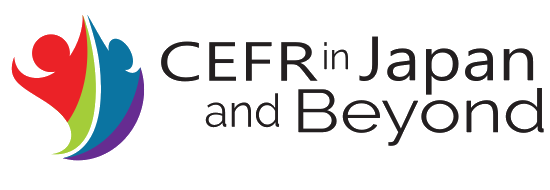Volume5
CEFR Journal - Research and Practice
Volume 5 (December 2022)
Volume: 5
Date of publication: December 31st, 2022
https://doi.org/10.37546/JALTSIG.CEFR5
These articles are open access and licensed under an Attribution-NonCommercial-NoDerivatives 4.0 International (CC BY-NC-ND 4.0) license.
Download PDF of complete issue:
Click here for downloading complete issue of volume 5
Table of Contents:
Volume 5-1, page 5-10: Aligning language education with the CEFR: A Handbook, Neus Figueras (University of Barcelona), David Little (Trinity College Dublin), Barry O’Sullivan (British Council)
Volume 5-2, page 11-24: A multimedia orientation course on the CEFR Companion Volume going back to 2001, moving forward to 2020 and beyond, Monica Barsi (University of Milan), Teresa Betarello (Provincial Centre of Adult Education, Milan)
Volume 5-3, page 25-44: Comparability Study Between CEFR and CSE: An Exploration Using the LanguageCert Test of English, David Coniam (LanguageCert), Michael Milanovic (LanguageCert), Wen Zhao (Jinan University, Guangzhou)
Volume 5-4, page 45-55: Framework of Reference for Sign Languages and Description of the Czech Sign Language, Martina Hulešová (Charles University)
Volume 5-5, page 56-73: Implementing a localized version of a CEFR-based curriculum, Tziona Levi (Israeli Ministry of Education), Simone Duval (Israeli Ministry of Education)
Editorial - Volume 5, Fergus O'Dwyer
The open source movement emanating from software development promotes universal access, with resources made freely available for possible modification and redistribution. This spirit is found in the development of the CEFR, and the invitation in the article by Neus Figueras, David Little and Barry O’Sullivan to CEFR users to share their experience and projects that can be included in future iterations of the Aligning Language Education with the CEFR: A Handbook. The general outline of the handbook featured in this issue discusses the aim of unifying and aligning elements such as curriculum, teaching/learning materials, teaching approaches, teacher training, and assessment. This feeds into the multimedia orientation course on the CEFR Companion Volume (CV) by Monica Barsi and Teresa Betarello: language learning is viewed as an ongoing process where reception, production, interaction, and mediation blend into each other to make up linguistic competence. The action-oriented approach in part involves language learning events accumulating and building new knowledge to move forward. A promising element of the orientation course is the presentation of the CV in a way that illuminates the theoretical framework of the CEFR (2001) for younger audiences, who may have only accessed the 2020 publication.
The future development of the CEFR potentially involves disseminating best practice through collaboration between interested parties working in different contexts and the further expansion of professional networks. The article by Martina Hulešová outlines the positive impact the sign language project has had on the Czech deaf community, as they took part as consultants, validators, dissemination panelists so that they understand the use and usefulness of the project. What began as adaptation of proficiency scales morphed into a much more encompassing general Framework of Reference for Sign Languages and a specific Reference Level Descriptors of Czech Sign Language. These bilingual (written Czech and Czech Sign Language) resources facilitate coordination for teaching, syllabi, curricula, assessment, teaching and learning innovations. These can begin to overcome challenges presented by language modalities, the absence of standardisation, and critically the lack of research into, or recognition of Czech Sign Language.
The contribution by David Coniam, Michael Milanovic and Wen Zhao provides institutions of higher education guidance when considering the admission of Chinese students submitting results of the Chinese College English Test, which is based on the China Standards of English, and the LanguageCert Test of English (which, in turn, is based on the CEFR framework). The final article discusses the introduction of a CEFR-aligned curriculum into the Israeli context. This required a change in teachers’ mindsets alongside a long-term, multi-stage implementation plan. Tziona Levi and Simone Duval use the ripple effect metaphor to analyse professional learning communities, and specifically collaborative dialogues in learning the curriculum through social interaction, activating conceptual curriculum language as a mediational tool and ‘languaging’ the meaning making process.
This mindset shift is in motion, with the call for experts to facilitate courses with teachers to prepare materials according to the guidelines of the CEFR-based curriculum. We look forward to further conversation-starting articles in following issues of the CEFR Journal: please see the call for abstracts if interested in submitting.
— Dublin (Ireland), December 2022
* * * * * * *
Updated by February 25th, 2023 (MGS)

